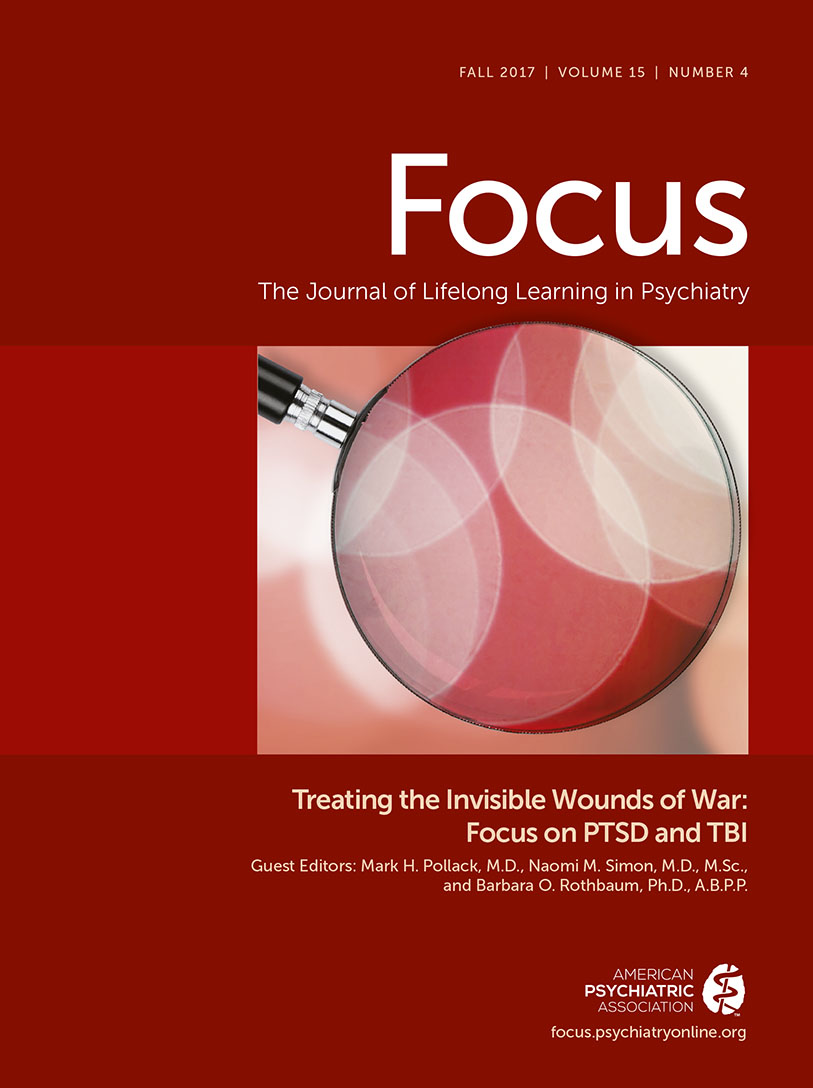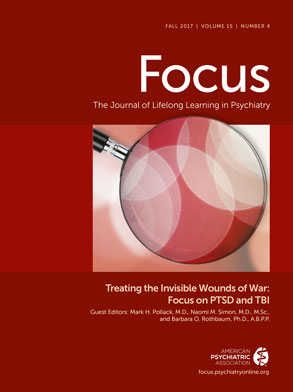An Overview of Sexual Trauma in the U.S. Military
Abstract
Uncovering an Epidemic
psychological trauma, which in the judgment of a . . . mental health professional, resulted from a physical assault of a sexual nature, battery of a sexual nature, or sexual harassment which occurred while the Veteran was serving on active duty, active duty for training, or inactive duty training. (3)
Prevalence of MSA and MSH in the U.S. Armed Forces
Risk Factors for Sexual Victimization in the Military
MST and Cumulative Trauma
What Makes MST Distinct From Other Forms of Sexual Trauma?
Male Survivors of MST
MST and LGBT VSM
MST and Impact on the Family System
MST and Mental Health Outcomes
MST and Physical Health Outcomes
MST and Sexual Health
Evidence-Based Treatment for PTSD Secondary to MST: A Stage-Based Approach
MST and Pharmacotherapy
Underutilization and Improving Access to Care
Conclusions
References
Information & Authors
Information
Published In
History
Keywords
Authors
Funding Information
Metrics & Citations
Metrics
Citations
Export Citations
If you have the appropriate software installed, you can download article citation data to the citation manager of your choice. Simply select your manager software from the list below and click Download.
For more information or tips please see 'Downloading to a citation manager' in the Help menu.
View Options
View options
PDF/EPUB
View PDF/EPUBLogin options
Already a subscriber? Access your subscription through your login credentials or your institution for full access to this article.
Personal login Institutional Login Open Athens loginNot a subscriber?
PsychiatryOnline subscription options offer access to the DSM-5-TR® library, books, journals, CME, and patient resources. This all-in-one virtual library provides psychiatrists and mental health professionals with key resources for diagnosis, treatment, research, and professional development.
Need more help? PsychiatryOnline Customer Service may be reached by emailing [email protected] or by calling 800-368-5777 (in the U.S.) or 703-907-7322 (outside the U.S.).

